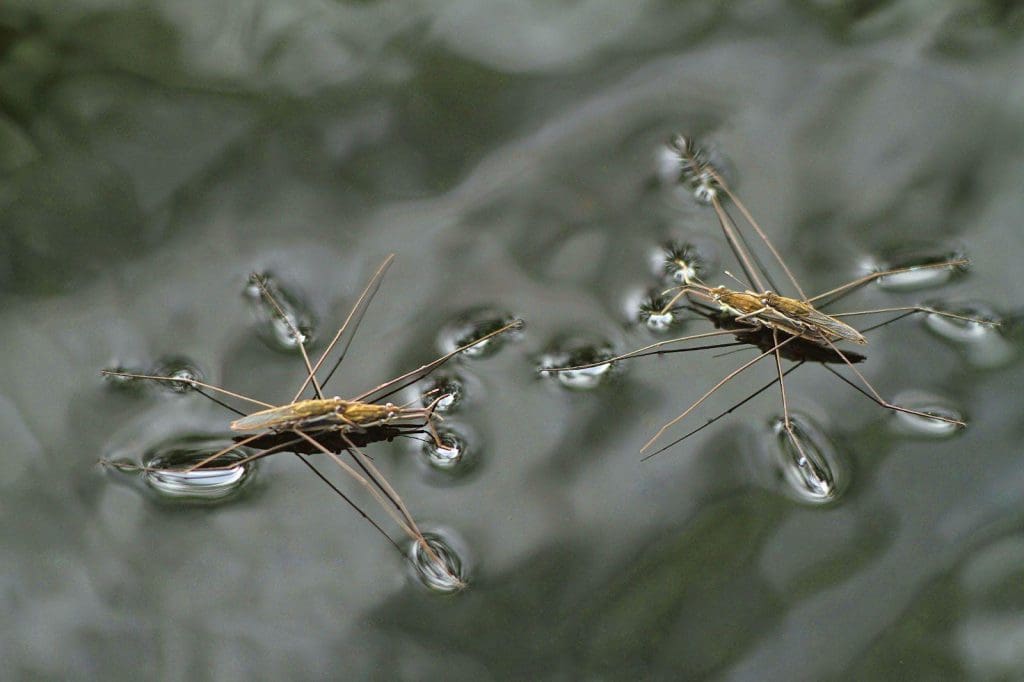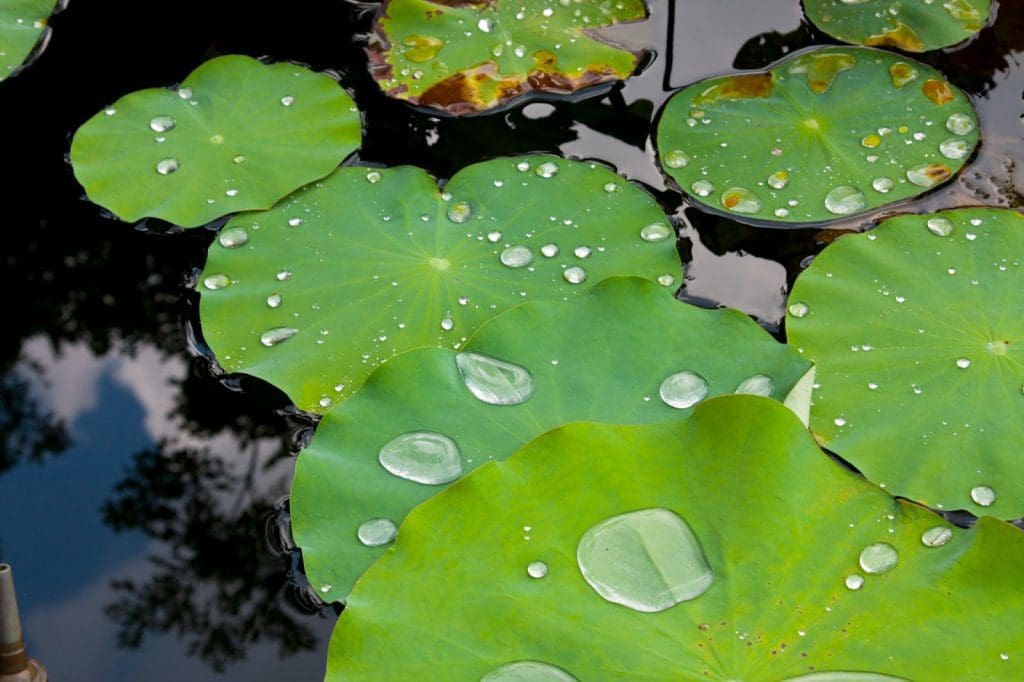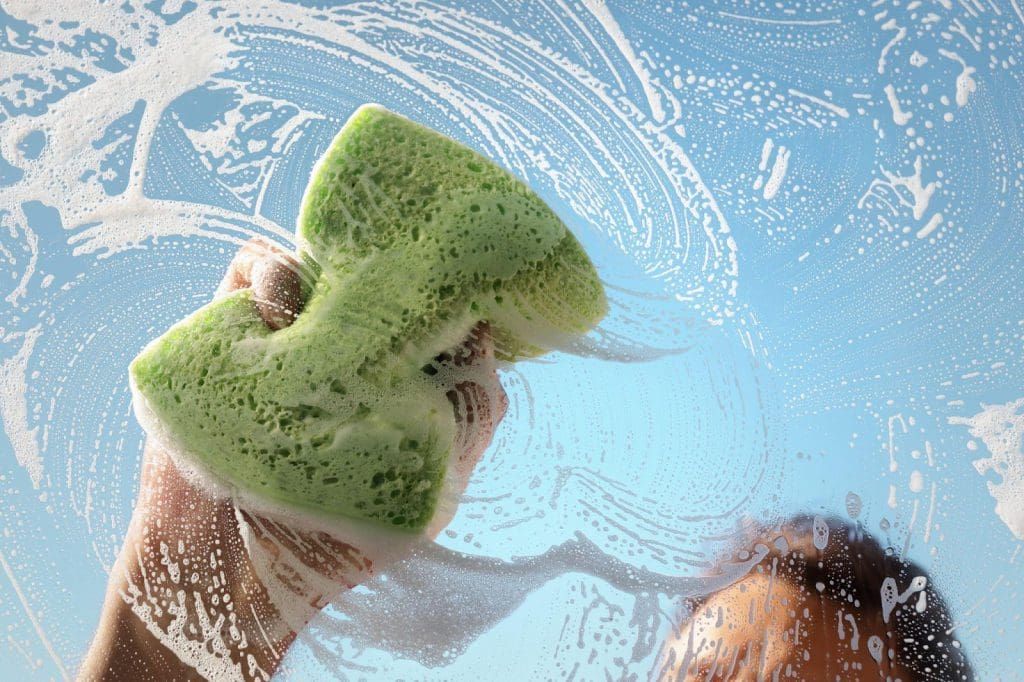
It’s not because they’re lighter or less dense than water, the answer is… surface tension!
It is what causes bubbles to form, it’s how water can crawl up the sides of a capillary tube, and it’s what allows insects such as the water strider to walk along the surface of a pond without breaking it.
Surface tension is the energy required to increase the surface area of a liquid, and thus what causes a liquid to want to have as small a surface area as possible. In other words, it's the ability of a surface to resist external force due to the molecular forces at work within the liquid. These forces include hydrogen bonding (strong intermolecular interactions) and dispersion forces (weak intermolecular interactions).

Among its many other unique properties, the chemical structure of water gives it a much higher surface tension than other liquids—about 72mN/m. The only liquid with a higher surface tension is mercury, at 500mN/m. Because of this, water is the most common example used when demonstrating surface tension, and we can see it in action everywhere we go.
Water is made up of two hydrogen atoms and one oxygen atom in a tetrahedral structure, and this configuration allows water molecules to form electrostatic bonds—called hydrogen bonds—between neighboring molecules.
Surfaces are often described as being either hydrophilic (water-loving) or hydrophobic (water-hating), and this is determined by the surface’s capability to bond with water molecules rather than the water simply binding to itself. This surface bonding capability is often determined by molecular polarity, and whether there are sites for hydrogen bonding to take place. In chemistry, ‘like attracts like’, so a polar molecule like water will be more attracted to a polar surface than a surface with no net charge.
When you look at water running off the leaves of a lotus flower, you’ll see that the leaf doesn't really get wet. The water just runs right off without a trace. The lotus effect is a special case of superhydrophobicity, and this is caused by two factors.

Firstly, lotus leaves are covered in cuticles which secrete a waxy substance across the leaf surface. Waxes and oils are hydrophobic and so water droplets will adhere more easily to other droplets of water than to the leaf surface.
Secondly, the surface of a lotus leaf may look smooth enough, but it is actually extremely rough at a microscopic level. It’s covered in many tiny points of leaf surface, forming fractal hierarchies of surface, and gaps in which air can be trapped. This increases resistance between the water droplet and the leaf surface, causing the water to simply roll off.
The energy of a surface can be lowered to let it break more easily. This is achieved using surfactants, short for surface active agents.

Surfactants are molecules with a hydrophilic head and a hydrophobic tail. The molecules can align themselves along an interface of water and another fluid (like oil or air) and this lowers the energy along the surface.
You can visualise this like an extra layer coating the water molecules and separating them from the interface and from each other. This spreads water molecules out thinly and causes bubbles to form.
In detergents, these tiny bubbles can then get into grooves and pores to clean away dirt and bacteria. In emulsions, the bubbles can be dispersed throughout another fluid, such as water particles suspended in oil to make margarine. Emulsifying surfactants are able to change the consistency of the two phases into something homogenous and ensure that it's much harder for them to separate.
Want to know more about weird chemical properties? You’re in the right place. We are here to help you with all your chemical property problems, including safety and storage, SDS management, Heat Mapping, Risk Assessment, and everything in between. Contact us today on sa***@*******ch.net.
Sources: